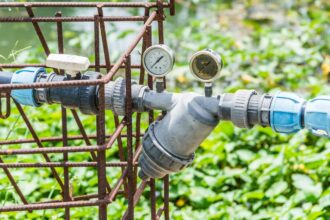When a storm passes through your area, your first instinct may be to assess the damage to trees, cars, and your yard. One of the most crucial but often overlooked parts of your home that can suffer serious damage is your roof. High winds, heavy rainfall, hail, and flying debris can all compromise its structural integrity, leading to leaks, mold, or even collapse if left unchecked. Roof damage isn’t always immediately visible, and failing to inspect and repair it promptly can result in costly long-term issues. Ensuring your roof is storm-safe isn’t just about peace of mind; it’s about protecting your home and your family. In this blog post, we’ll explore the key areas you need to check after bad weather to determine whether your roof has taken a hit, and what to do about it if it has.
Check for Missing or Damaged Shingles
One of the most common issues following a storm is missing or damaged shingles. High winds can rip them off completely, while hail can crack or dent them. Even a single missing shingle can expose the underlayment and wooden structure of your roof to moisture, accelerating the rate of deterioration. After a storm, take a walk around your property and visually inspect your roof from the ground. Look for uneven patterns, color changes, or any signs that shingles are curled, cracked, or torn. If you have a safe way to access your roof or can use binoculars, that’s even better for a closer look. Promptly addressing any damaged shingles by replacing or securing them will help maintain your roof’s ability to repel water and resist further wear.
Schedule a Professional Roof Inspection
Even if everything appears intact after a storm, hidden damage can go unnoticed without a thorough inspection. Shingles may have loosened, flashing could be slightly displaced, or water might be slowly seeping into the attic, issues that are not always visible from the ground. That’s why the professionals providing roof replacement in Ashburn say it’s wise to have a licensed roofer assess your roof’s condition, especially if you live in an area prone to severe weather. In some cases, particularly if the damage is extensive, homeowners may find that a replacement becomes necessary due to the age or vulnerability of the existing structure. A professional inspection ensures nothing is overlooked before small problems grow worse.
Inspect Flashing and Roof Edges
Roof flashing, typically made from thin metal sheets, is used around chimneys, vents, skylights, and edges to divert water away from critical areas. During a storm, flashing can loosen or bend, allowing water to seep underneath the roofing material. Pay close attention to these areas, especially if you notice water stains on your ceiling or walls. Check that all flashing is still tightly sealed and free from rust or separation. Storms can also lift the edges of your roof where wind pressure is highest, weakening its protective seal. Carefully inspecting the roof perimeter ensures you’re not missing subtle but important signs of damage that could eventually lead to leaks and rot.
Look for Signs of Water Infiltration
Sometimes, damage isn’t visible on the outside but reveals itself inside your home. Check your attic and upper ceilings for signs of water infiltration, such as damp spots, dark stains, or mold growth. Wet insulation is another red flag and can indicate a compromised roofing system. It’s essential to catch water damage early to prevent it from spreading to other parts of your home’s structure. If water is getting in, it likely means there’s an opening or vulnerability somewhere on your roof. In some cases, a professional roof inspection may be necessary to identify the exact source, especially if your attic space is hard to access or lacks good lighting.
Assess the Gutter and Downspout System
While gutters aren’t part of your roof per se, they play a vital role in directing stormwater away from it. Clogged, broken, or detached gutters can cause water to pool on your roof or overflow down the sides, damaging siding and foundations. After a storm, remove any debris from your gutters and check for signs of sagging or detachment. Look for shingle granules in your gutters, as an excess of these may indicate significant wear and tear from hail or wind. Proper drainage ensures that water doesn’t accumulate on or around your roof, which can prevent both immediate and long-term structural damage.
A post-storm roof inspection is a chore and a critical part of home maintenance that can prevent minor issues from snowballing into major repairs. By taking the time to check for shingle damage, inspect flashing, identify water infiltration, assess gutters, clear debris, and seek professional help when needed, you ensure that your roof remains strong and secure. Don’t wait for the next storm to find out your roof was already compromised. Make post-storm roof checks a regular part of your home care routine and keep your home safe through every season. Would you like a printable storm checklist to help with your next inspection?











